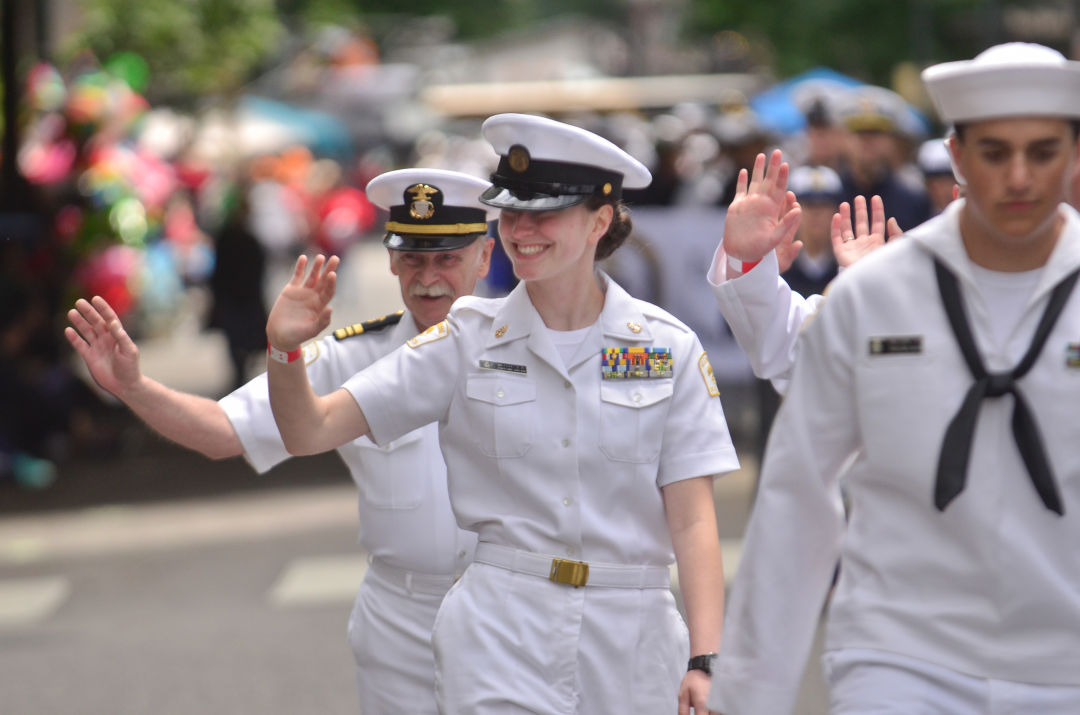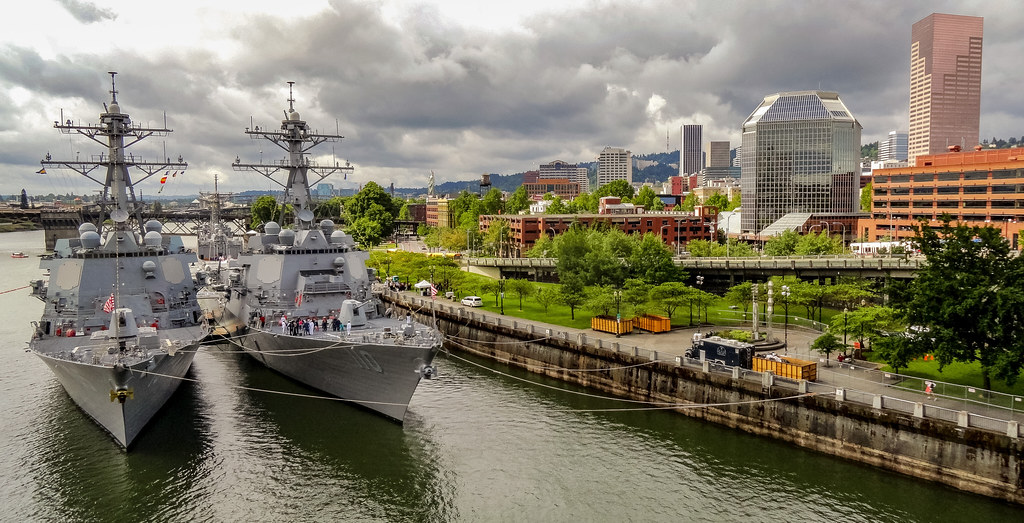Growing up in a small town in Oregon, I had little interaction with the military. Oregon has few active-duty military bases, most of which were several hours away. My first experience even really seeing members of the Armed Forces was on a trip to Portland to get ice cream (when you come from a small town in Oregon, there is only so much to do. Also, Salt & Straw on 23rd Avenue is fantastic). Coincidentally, that happened to be during Fleet Week, a week-long event in which the public gets the opportunity to visit Navy ships and learn more about the U.S. Navy. To a high schooler, the experience was surreal. As I stood in line for my ice cream, I was enamored with the well-dressed sailors strolling around 23st Avenue, watching people stop them on the street to pay their respects.

My limited contact with the military was emblematic of the growing civilian-military divide. According to a Pew Research Center survey, only 33% of adults aged 18-29 have an immediate family member who served in the military, compared to 79% of adults aged 50-64. My grandfather served in the Air Force as part of the “Greatest Generation.” Yet, since 1973, fewer and fewer Americans have visibility into the armed forces. Even as it becomes more diverse, military service is still largely influenced by familial ties and remains isolated from civilian life. Historian Andrew Bacevich writes in his book “America’s New Militarism” that “the attitude prevailing on the civilian side of the civil-military divide can be summarized briefly: although we don’t know you, rest assured that we admire you–now please go away.” Many of the interactions I witnessed during Fleet Week reflected this dynamic. One woman allowed a group of young sailors to cut her in line for ice cream. Another asked to take a picture with them. Yet, for the most part, the public simply respected the sailors from afar, not knowing exactly how to connect or interact with them.

In Secrecy, Surveillance, and Democracy, the growing civilian-military divide has been an underlying theme. The tension today between the media and the national security apparatus is fueled by this divide. Journalist Barton Gellman recounts in his book “Dark Mirror” an explosive interaction he had with Admiral William McRaven, the decorated veteran credited with leading the special ops raid that killed Osama bin Laden. “Until you’ve got to pull the trigger, until you’ve had to bury your people, you don’t have a clue,” McRaven told him. Gellman didn’t reject the assertion, agreeing that “Warriors and civilians are tribes apart.” The implementation of the All-Volunteer Force (AVF) and several rounds of Base Realignment and Closure (BRAC) had many net positives for the country. The 5 rounds of BRAC led to booming industries in places like Austin and Philadelphia and continue to save around $12 billion annually, meanwhile the unpopular Vietnam War demonstrated that a move away from the draft was necessary.
But they also had unintended side effects that must be addressed. According to Bacevich “to the extent that the members of the AVF see themselves as professionals–members of a warrior caste adhering to their own sets of principles–they have little interest in nurturing a close relationship with society.” There is also a socioeconomic divide; Marybeth Ulrich, a 34-year veteran of the Air Force, writes that “ROTC programs are rare at the nation’s most selective colleges and produce a fraction of the graduates they once did.” With younger and wealthier demographics having little personal attachment to the military, national security issues go on the backburner, and this is reflected in the priorities of our elected officials. Ulrich writes that “Constituents are not clamoring for an end to wars that they barely notice and that do not directly affect them.” Even as the war in Afghanistan approaches its twenty-year anniversary and Americans writ-large indicate that they are weary of war, the public still looks for elite cues as to how the war should wind down in part because of this detachment.
So how can we narrow the civilian-military divide? Bacevich suggests reviving “the moribund concept of the citizen-soldier.” Crucially, this does not mean a return to the draft. Instead, Bacevich advocates reawakening a willingness to serve among privileged America through mechanisms like shorter enlistments, more generous signing bonuses, greater flexibility in retirement options, and the passage of a new GI bill that on principle ties federal education grants to citizen service. These proposed changes will make the armed services more diverse, more connected to America’s universities, and more attractive to the children of America’s elites. Policymakers may think more carefully about national security decisions if it is their children, not just the children of the less privileged, that are enlisted.
Students at Colorado College have more visibility into military life than most liberal arts colleges. Colorado College is part of the Quad, a joint initiative between CC, Pikes Peak Community College, University of Colorado Colorado Springs, and the U.S. Air Force Academy. Last summer, students of CC got to work with a team of peers from these higher learning institutions, one of them a military academy, to study the local economic and social impact of COVID-19. Though these experiences are not shared across the entire campus, many students at CC research, learn, and compete alongside young cadets, an experience that gives more visibility into the U.S. military.

The vision I had of the sailors on 23rd Avenue was one shared by many young Americans: Surface-level. I romanticized their careers without caring to know more about what their day-to-day lives were like. Gellman is right, warriors and civilians are tribes apart. Many of us applaud the military at the start of baseball games, thank service members for their sacrifice, but nevertheless remain perfectly comfortable conceptualizing our worlds as entirely separate. In order for the civilian public to contribute healthy discourse to foreign policy, this detachment must change.

Very insightful! Thank you. FWIW, CC does currently have *one* student who is a contracted ROTC cadet, simultaneously taking a full load of classes at CC and taking ROTC courses and labs at UCCS. It’s a heavy load, and a lonely path. Many profs and administrators are supportive; fewer students are, or even understand what ROTC is. It is a shame there are not more ROTC cadets at CC, to help break down the gaps in exposure and understanding your article describes. I think the college could help, by promoting (or at least more effectively communicating) about ROTC opportunities to CC students and potential CC students, and inviting any of the many local military organizations — the UCCS ROTC battalion, the Air Force Academy, Northcom, there are more — to come to campus and help educate the CC community about what military service is, and who the people are that choose it and why.
I could not agree more. There is a lot of potential for CC students to gain a better understanding of military service simply by virtue of being in CO Springs. Even outreach efforts or joint-events like the one you describe would help reduce the civilian-military divide. Thank you for your comment!